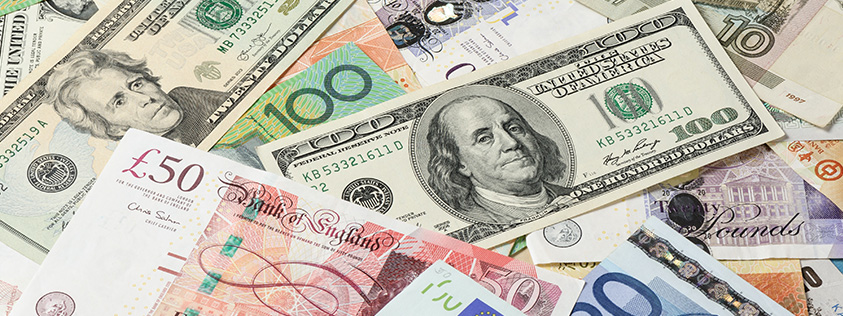The Money Trap
The Money Trap – How Cash Can Kill Your Incentive Efforts
Article written by Paul Nolen, SalesForceXP
With apologies to Shakespeare, we did not come to praise cash, but we didn’t come to bury it either – only its use as an employee incentive.
Research released within the past year continues to support the widely held belief that people who earn enough income to cover basic needs are happier than those who don’t. Beyond that minimum level, however, those who are much richer aren’t necessarily much happier.
“Once you’re safe and warm and fed, [earning more money] makes surprisingly little difference,” says David Schkade, professor of management at the University of California at San Diego and the co-author of “Would You Be Happier If You Were Richer? A Focusing Illusion,” which was published in the June issue of Science magazine. Among other things, the report studied government data detailing how folks divvy up their waking hours. They found that people with higher incomes tend to spend more time working, commuting and engaging in obligatory non-work activities such as home maintenance. All of these are associated with lower happiness.
Schkade’s research dovetails with findings on why merchandise and travel are stronger incentives than cash. We reported last year on research by Columbia University Professor Ran Kivetz that shows people are reluctant to spend money on non-essentials, which is a significant reason why non-cash rewards are better motivators.
Now, Scott Jeffrey, an assistant professor of management sciences at the University of Waterloo in Ontario Canada, has released his findings on the characteristics of non-cash incentives that make them effective motivators. Why should you care? As Jeffrey emphasizes, “A significant amount of money is being spent on tangible, non-cash incentives with a limited understanding of how they can best be utilized.”
Why Cash Falls Short
Proponents of cash incentives may argue that recipients can use them to purchase whatever provides the most satisfaction. As Ran Kivetz points out, however, people are more likely to spend windfall money on utilitarian rather than hedonic items. Even if the recipient of a cash incentive purchased the same item that could have been offered in its place, it would not carry the same social reinforcement as if it were awarded by the firm, Jeffrey emphasizes.
“Mental accounting research suggests that once the money is given to the employee it becomes the employee’s money. Anything purchased with it is something the employee chose to purchase rather than something the firm awarded to the employee.”
Used But Not Always Understood
Many U.S. companies already believe in the motivational muscle of non-cash incentives. A recent survey by the Incentive Federation, an incentive industry research and lobby group, found that 78 percent of firms use tangible incentives with their sales employees and 67 percent use them with non-sales employees.
In order to get maximum return on the use of non-cash incentives, it’s important to have a general understanding of why they are effective, says Jeffrey. He has identified four characteristics of tangible incentives that make them motivating characteristics, it should be noted, that are not available with cash incentives: Justifiability, Social Reinforcement, Separability and Evaluability.
Justifiability
A common denominator of many tangible incentives is that they are items (or trips) that are viewed as luxuries. The recipients wouldn’t normally buy them for themselves, even if they had sufficient funds. If an item is something that an employee values highly but would never purchase himself, the opportunity to earn it as a reward for hard work provides a means of obtaining the desired object without violating one’s standards of justification. For example, a hard-charging salesperson might not propose an expensive family vacation to Hawaii, but everyone would be pleased if it was earned as a reward for being a top performer. “In this sense, hard work becomes an attractive means to acquire something that would be difficult to obtain through other means, causing the earning of a tangible, non-monetary incentive to carry additional value,” says Jeffrey. “The perceived value of a tangible incentive will increase with the difficulty that the employee would have in justifying the purchase of that incentive with his or her own money.” Since everyone’s determination of a “justifiable purchase” differs, the strength of this effect will vary across national and organizational cultures, as well as among individuals. In other words, tangible incentives will not be as effective with a salesman who treats himself to everything he desires without hesitation. The good news for incentive users, says Kivetz, is that we are a culture of people who are reluctant to spend money on nonessentials.
Social Reinforcement
One of the central tenets behind reinforcement theories of motivation is that rewarding specific behavior will lead to additional instances of that behavior. This has proven to be so with sales incentive programs. Tim Houlihan, vice president of reward systems at Minneapolis-based firm, says clients who experience a significant sales lift from incentive programs continue to enjoy that lift after the program is over. A tangible incentive is an effective carrier of this type of utility because of its high level of visibility, says Jeffrey. People will happily show off the golf clubs, gas grill or widescreen TV they earned for hitting a sales goal. Cash is visible in its own way, of course, but it’s less socially acceptable to tell a neighbor or co-worker about the $1,000 you earned as a bonus. By providing a better means to indirectly bring attention to one’s good performance, the value of earning a tangible incentive is enhanced. An additional benefit to using tangible incentives is that they serve as reminders of the exemplary performance that led to their receipt. Physical goods remind the employee of their performance and the firm every time they use it. Incentive travel works much the same, providing memories, pictures and mementos that conjure up goodwill toward an employer.
Separability
People do not consider all of their income collectively. They mentally segregate some sources and uses of funds and aggregate others, assigning subsets of income to different “mental accounts.” Investment income and home appreciation, for example, are likely to be placed into different income accounts than salary. Once a source of income is categorized, the value of that incremental income is calculated. There is less incremental value of increased earnings as earnings increase, says Jeffrey. “A person gains less utility from each additional dollar as the total pay increases.” Since a cash incentive is earned as part of the job, an employee is more likely to view it as “more salary.” This means that the employee will evaluate the increase relative to his or her base salary, making the award subject to the value-reducing
effects of diminishing marginal utility. A tangible incentive does not have this problem. Since it’s consumed less frequently, a tangible incentive is more likely to be evaluated in isolation, or at least as part of a much smaller mental account such as travel or entertainment, says Jeffrey.
Evaluability
The most effective non-tangible incentives are items that are associated with pleasurable experience rather than more instrumental or functional items. When considering whether to exert additional effort in pursuit of a reward, employees instinctively predict what the item offered is worth to them. The vivid attributes of incentives like expensive vacations, gourmet food or home electronics raise the perceived value of the incentive. An equal amount of cash is rarely perceived as having equal value. “The harder employees work toward an award, the more they think it’s worth, which in turn leads to more effort. This is less likely to occur with cash awards since the economic value of cash is less ambiguous and less prone to the psychological modification of perceived value,” says Jeffrey.



